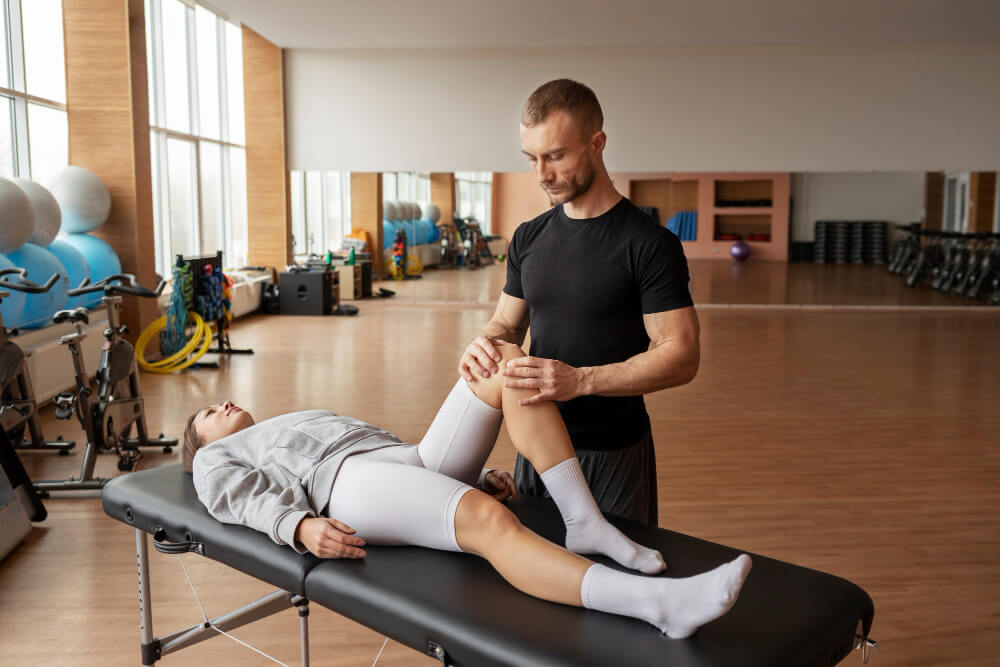ACL Injuries: Sports Medicine Care
The anterior cruciate ligament (ACL) is a vital ligament in the knee that provides stability and prevents the shinbone from sliding too far forward under the thigh bone. An ACL injury, often involving a tear or sprain of the ligament, can be a significant setback for athletes and individuals involved in sports or physically demanding activities.

Common Causes of ACL Injuries
ACL injuries typically occur during activities that involve sudden changes in direction, jumping, or landing. Common sports associated with a high risk of ACL injuries include:
- Basketball
- Soccer
- Football
- Skiing
- Volleyball
- Tennis
While contact sports are often associated with ACL injuries, non-contact injuries can also occur due to improper landing techniques or biomechanical factors.
Symptoms of ACL Injuries
Signs and symptoms of an ACL injury may include:
- A sudden “pop” or tearing sensation in the knee
- Immediate pain and swelling
- Difficulty walking or bearing weight on the injured leg
- Feeling of instability or “giving way” in the knee
- Locking of the knee joint
Diagnosis of ACL Injuries
A healthcare professional can diagnose an ACL injury through a combination of physical examination and imaging tests. Common diagnostic procedures include:
- Physical examination: Assessing knee stability, range of motion, and pain.
- Magnetic resonance imaging (MRI): A detailed imaging test to visualize the ACL and other structures in the knee.
Treatment Options for ACL Injuries
Treatment for ACL injuries varies depending on the severity of the injury and individual factors. Common treatment options include:
Non-Surgical Treatment

- RICE (Rest, Ice, Compression, Elevation): Applying ice, compression, and elevation to reduce swelling and pain.
- Physical therapy: Exercises to strengthen the muscles surrounding the knee and improve stability.
- Braces or supports: Wearing braces or supports to provide additional stability to the knee.
Surgical Treatment
- ACL Reconstruction: Surgically repairing the torn ACL using a graft from another part of the body. Common graft options include hamstring tendons, patellar tendon, or allograft (donor tissue).
- Arthroscopic Surgery: A minimally invasive surgical technique that uses small incisions and a camera to visualize the knee joint.
Rehabilitation and Recovery
Rehabilitation is a crucial component of recovering from an ACL injury. A comprehensive rehabilitation program typically includes:
- Physical therapy: Exercises to strengthen the muscles around the knee, improve flexibility, and restore range of motion.
- Proprioception training: Exercises to improve balance and coordination.
- Gradual return to activity: Slowly increasing the intensity and complexity of activities.
Preventing ACL Injuries
While it’s not always possible to prevent ACL injuries, certain measures can reduce the risk:
- Proper conditioning: Maintaining adequate strength, flexibility, and balance.
- Correct technique: Learning and practicing proper techniques for sports-specific movements.
- Warming up and cooling down: Preparing the body for activity and preventing injuries.
- Protective equipment: Wearing appropriate protective gear for sports.
An ACL injury can be a significant setback for athletes. However, with the right treatment and rehabilitation, many individuals can successfully recover and return to their sport. Seeking expert care from a sports medicine specialist is essential for optimal outcomes and a smooth recovery process.
